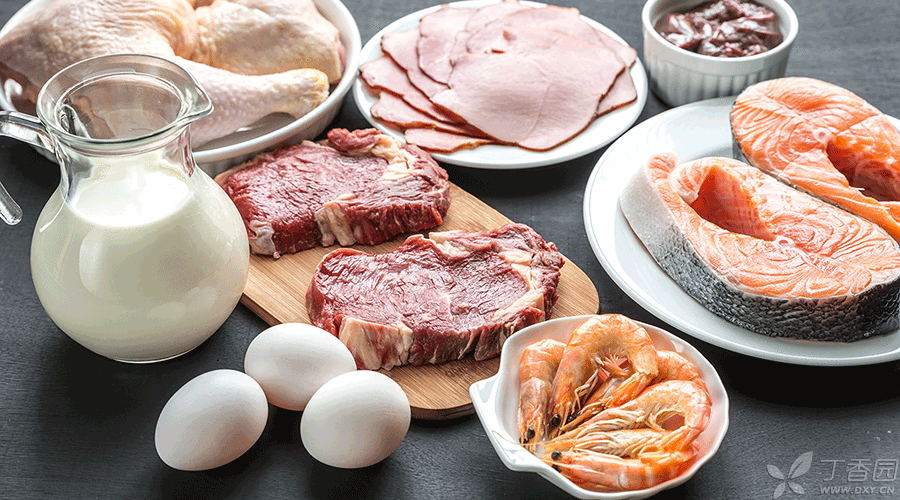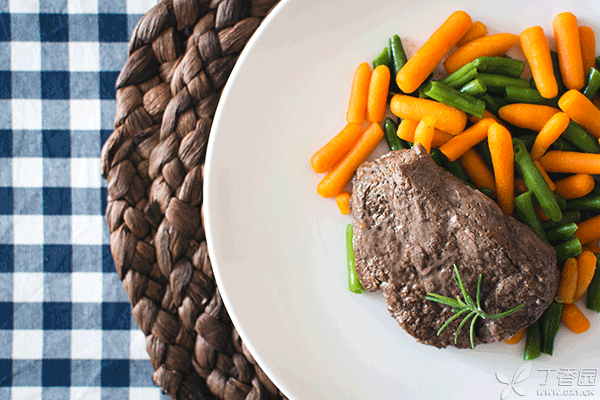
In addition to diabetes diet, low protein diet is another treatment measure as important as drugs. Once the doctor tells you that a low protein diet is needed in the future, it means that three meals a day are no longer arbitrary, but need to be well planned, otherwise it may affect the disease.
However, clinicians usually do not have time to explain in great detail whether what is a low protein diet, so let Dr. Clove introduce it to you.
A low protein diet means eating less meat?
[Eat less food] [Meat can be eaten, but not too much] [Bean products cannot be eaten]… Doctors often tell patients this. However, the patients just feel that what should eat less now, and life has become miserable ever since.
In fact, the statement of “low protein diet” is not complete, because two words [high quality] are missing in front of it.
Don’t underestimate these two words, which determines the strategy of choosing food: under the premise of total protein control, half of the protein needs to be obtained from animal foods, namely lean meat, poultry meat, fish meat, shrimp meat and dairy products.
The closer the amino acids in food protein are to the human body composition, the higher the overall absorption rate of essential amino acids. Among them, eggs, milk and fish are the top ranked. Therefore, under the premise of total amount control, the quality of protein in food will be high.
Therefore, the correct expression should be high quality and low protein diet.
Who needs a low protein diet?
Whether a low protein diet is needed is judged according to renal function. Clinicians will require patients to start adopting a low protein diet in due course according to the stage of slow kidney disease.
How to judge renal insufficiency? The easiest thing to do is to see if the creatinine in the blood test exceeds the standard. Once exceeding the standard, you need to find a doctor in the nephrology department, and then finally determine the renal function through glomerular filtration rate.
It is worth reminding that usually patients say that there is foam in urine and proteinuria in urine cannot directly reflect renal function.
For a more detailed introduction to renal function, you can click > > here.
Why do you want a low protein diet?
Don’t underestimate this simple diet of controlling the total amount of protein, It plays an irreplaceable role in the treatment of chronic kidney disease. A low protein diet is to reduce the burden on the kidney by reducing the amount of protein consumed from food, improve proteinuria, and thus delay renal hypofunction. This is like letting an old cow tow a truck. It must reduce its weight, otherwise it may be exhausted.
Therefore, a low protein diet must run through the whole treatment process of chronic kidney disease.
How do you know how much protein you need every day?
Usually doctors will tell patients how many stages of chronic kidney disease are. In this era of big data, attention must be paid to numbers.
For patients with chronic kidney disease stages 1 and 2, the daily protein intake is 0.8 g per kilogram of body weight, while stages 3, 4 and 5 need to be reduced to 0.6 g per kilogram of body weight, and compound-ketoacid preparation needs to be added.
For example, a 60 kg patient, if it is chronic kidney disease stage 1 or stage 2, can eat 48 grams of protein every day, while the same stage 3, stage 4 or stage 5 patients, can only eat 36 grams. The difference of 12 grams of protein is equivalent to 5 metapenaeus or 400 mL of milk. It is still a lot.

How to achieve a low protein diet?
1. Calculate the total amount
After determining how much protein you need every day according to kidney function, then there is the question of how to choose food. Since half of the protein required in a low protein diet comes from high-quality protein, you should know how many meat dishes you can eat every day.
2. Make sure that every meal has high-quality protein, that is, meat, eggs and milk. For example:
Breakfast: 200 mL milk (6g protein) Chinese food: 10 shrimps (10g protein) Dinner: 1 yellow croaker (10g protein) + 25g meat slices (5g protein)
So there are already 31 grams of protein.
3. Staple food, vegetables and fruit
A 60 kg chronic kidney disease stage 1 patient, 48 grams of protein per day, lose the above 31 grams, and 17 grams can be distributed to staple food, vegetables and fruits.
- Staple food: A small bowl of rice contains about 4g of protein, Therefore, one small bowl of rice can be eaten for lunch and one small bowl for dinner. The protein content of other staple foods (noodles, wonton, buckwheat and corn) is higher than that of rice. The consumption should be minus 1/2 ~ 1/3. Vegetables: The protein content in beans (hairy beans, peas, broad beans, concanavalin beans, pea seedlings, soybean sprouts, etc.), yams, broccoli, winter bamboo shoots, lilies, potatoes and sweet potatoes is more than 3g/100g, so try to avoid or reduce them. If you eat them, the staple food needs to be reduced. It is recommended to eat green leafy vegetables. Fruits: The protein content in fruits can be ignored.
In general, a low-protein diet is to ensure meat and reduce the amount of cereals, fruits and vegetables.
How to make a delicious protein diet?
Chinese people grew up eating rice. Reducing rice will make people feel very uncomfortable. Don’t worry, there are two ways to keep eating rice while achieving low protein.
1. Choose low protein rice
The protein in this kind of rice is only 1/10 ~ 1/25 of that of ordinary rice, so when eating this kind of rice, there is no need to reduce the amount of food, and at the same time, the amount of meat dishes can be increased. The disadvantage is that the price is relatively expensive. Fortunately, the number of domestic manufacturers is gradually increasing, so the price will also drop in the future.
2. Choose cereals with low protein content and high starch content as staple food.
Arrange 1-2 meals in three meals. These cereals with low protein content include: wheat starch (clear flour), corn starch, lotus root starch and vermicelli. Among them, wheat starch can be used to make wheat starch potato cakes, wheat starch crystal dumplings, wheat starch leek steamed dumplings and wheat starch noodles. At present, there are also wheat starch biscuits on the market, which are optional additives for low protein diet.
How to implement a low protein diet when eating out?
Be sure to tell your friends or family about your current diet so that they can cooperate better. Don’t be embarrassed to say so.
When eating, the amount of meat dishes is 1/3 more than usual, but not more than twice. Vermicelli pot, crystal shrimp dumplings and potatoes can replace staple food. Apart from beans, other vegetables and fruits can be enjoyed with relatives and friends.
Other Details to Pay Attention to about Low Protein Diet
Since the low protein diet requires long-term adherence, there are still some details that need special attention. The common saying that “details determine success or failure” also applies here.
- Ensure sufficient energy: Adequate energy intake is a prerequisite to ensure the effective utilization of protein. Therefore, before implementing a low protein diet, Both doctors and patients should go to the nutrition clinic and have the nutrition doctor determine your energy intake. Weigh yourself regularly: Regular weight measurement can help you know your nutritional status in time. Regular monitoring of renal function and electrolyte: to understand the effect of low protein diet on renal function and electrolyte. Regular monitoring of albumin and prealbumin: to understand your body protein synthesis and nutritional status.
Special Reminder: Patients with cirrhosis do not need a low protein diet, But don’t eat a high-protein diet to increase resistance. However, if you have a history of liver coma or bleeding, you need to control protein intake or even eat a protein-free diet. This requires consulting a clinical nutritionist. People with high albumin levels do not need a low-protein diet, which indicates that the body’s nutritional status is good and it is good to continue to maintain it.
Finally, if you occasionally eat more rice, beans, etc., you don’t need to blame yourself too much, as long as you pay attention to appropriate reduction in the next meal. After all, eating delicious food should be a kind of enjoyment in life.
Responsible Editor: Fei Fei
